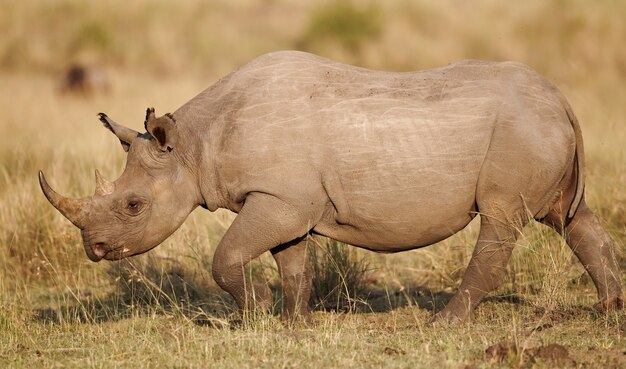

They live in the Ken Olgata Conservancy in Kenya, and they are protected around the clock by armed guards. Western black rhinoceros is thought to be genetically distinct from other rhino tribes.Īs of March 2018, there are only two rhinos left in the northern white rhinoceros, both female. The Western Black Rhinoceros (Diceros bicornis longa) or the West African Black Rhinoceros was a subspecies of the Black Rhinoceros, which was declared extinct by the IUCN in the 21st. The contemporary species has three short toes with wide, flat nails on the tips. With the exception of the Sumatran rhinoceros, they are largely or entirely hairless, save for the tail tip and ear fringes, while some extinct species had thick fur. Even the white rhinoceros, which tends to be lighter than the others, are all gray or brown in color.
WHARE WEST AFRICAN BLACK RHINOCEROS DOES LIVE SKIN
Rhinoceroses are renowned for having thick skin that often folds into plate-like plates, particularly around the shoulders and thighs. Larger species’ adults often weigh 3–5 tons. The Sumatran rhinoceros, which is about 2.5 meters (8 feet) long and 1.5 meters (5 feet) high at the shoulder, and the white rhinoceros, which is about 4 meters (13 feet) long and nearly 2 meters (7 feet) high, are both large rhinoceroses in the modern era. The presence of one or two horns on the top of the snout, which are not real horns but instead are made of the fibrous protein keratin, which is also present in hair, distinguishes rhinoceroses from other species. A herd of deer, a school of fish, a colony of bats, a flock of turkeys, a swarm of bees, a congregation of alligators, a bed of clams, an army of frogs, a nesting place for penguins, a clan for hyenas, a pride for lions, a pack for wolves, a band for coyotes, and a murder for Who comes up with these names? Keep reading.Ī crash of rhinos is a gathering of them. This article will be discussing the reality of the African rhino and the way it is almost extinct. Rhino footprints may resemble the Ace of Clubs since they have three toes on each foot. Even toed ungulates, which include cattle, deer, antelopes, goats, sheep, pigs, camels, and llamas, are classified as artiodactyls. The term “perissodactyls” or “odd-toed ungulates” refers to these creatures. Tapirs, horses, and zebras are rhino cousins that are still alive. However, the good thing is African rhino is saved and reversed in a way not extinct. African rhino has been a concern to the conservers due to their high propensity that is going to be extinct unless a good remedy is taken.


 0 kommentar(er)
0 kommentar(er)
